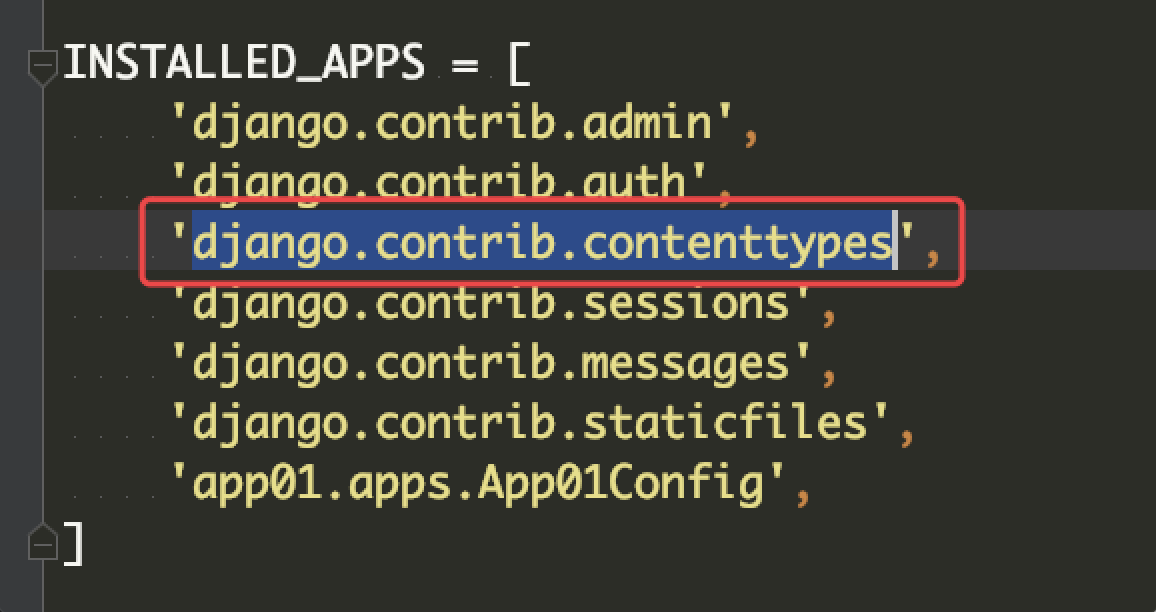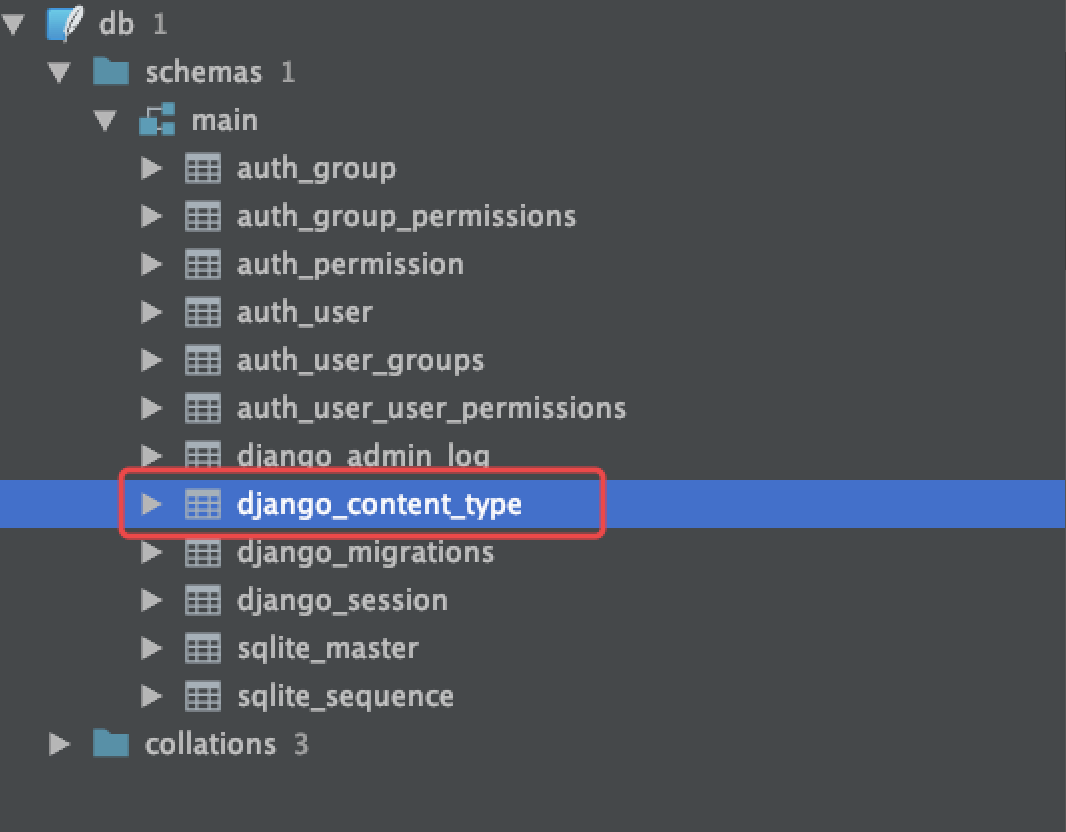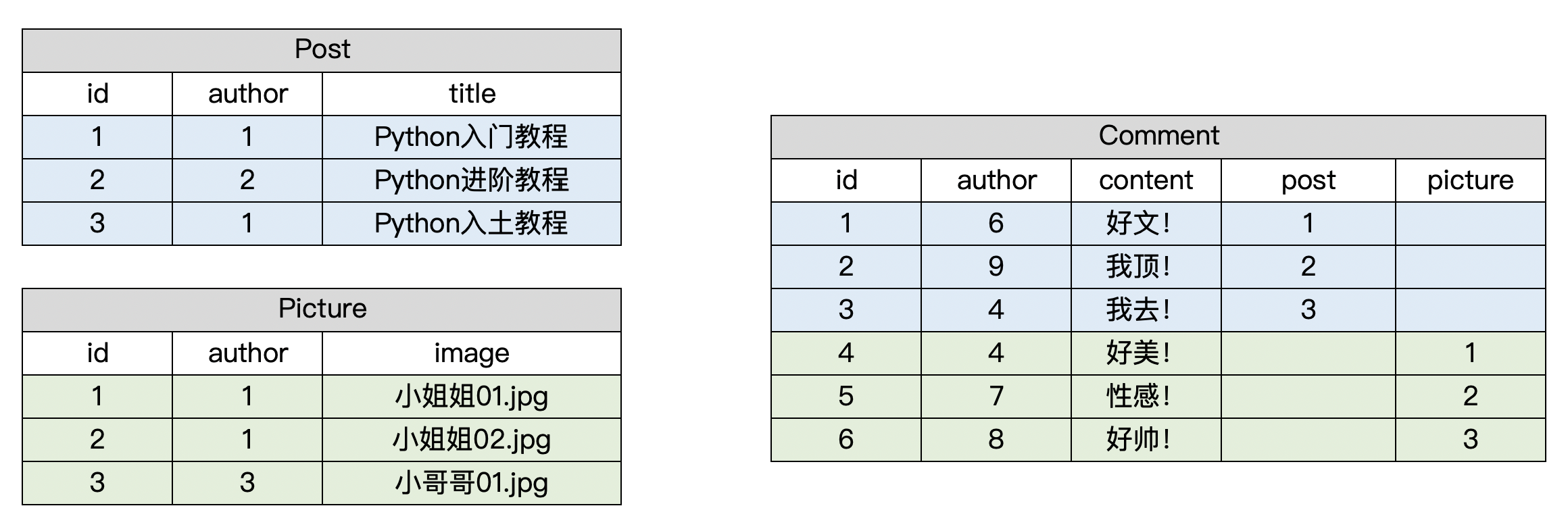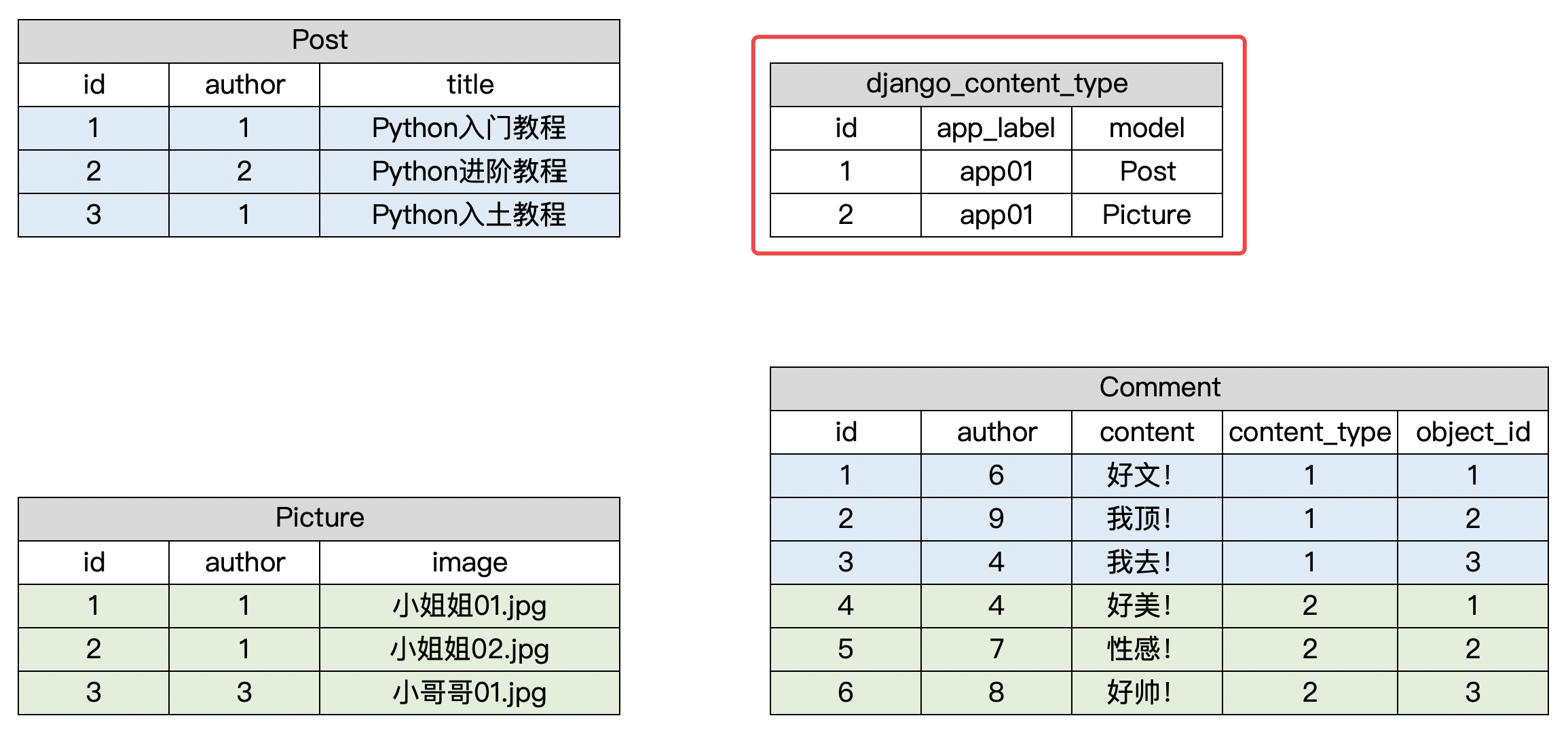介绍
Django包含一个contenttypes应用程序(app),可以跟踪Django项目中安装的所有模型(Model),提供用于处理模型的高级通用接口。
Contenttypes应用的核心是ContentType模型,位于django.contrib.contenttypes.models.ContentType。 ContentType的实例表示并保存项目中安装的模型的信息,每当有新的模型时会自动创建新的ContentType实例。
只要使用django-admin startproject 命令创建的Django项目(PyCharm创建Django项目同理),默认都会在settings.py的INSTALLED_APPS列表中安装好django.contrib.contenttypes。

我们执行了数据迁移命令之后,会自动在数据库中创建一个名为django_content_type的表。

表结构如下图所示:

其中,app_label字段存储了APP的名称,model字段存储了APP下的具体的模型类的名称。
应用场景
我们在网上po一段散文诗也可以po一张旅途的风景图,文字可以被评论,图片也可以被评论。我们需要在数据库中建表存储这些数据,我们可能会设计出下面这样的表结构。
class Post(models.Model):
"""帖子表"""
author = models.ForeignKey(User)
title = models.CharField(max_length=72)
class Picture(models.Model):
"""图片表"""
author = models.ForeignKey(User)
image = models.ImageField()
class Comment(models.Model):
"""评论表"""
author = models.ForeignKey(User)
content = models.TextField()
post = models.ForeignKey(Post, null=True, blank=True, on_delete=models.CASCADE)
picture = models.ForeignKey(Picture, null=True, blank=True, on_delete=models.CASCADE)
这表结构看起来不太简洁,我们画个图来看一下:

能用是能用,但是评论表有点冗余啊。好多列都空着呢啊!
我们优化一下,我们在评论表里不直接外键关联 文字和图片,而是存储一下关联的表名和字段,这样就好很多了。
看下图:

那我们不妨步子再大一点,再往前走一步试试,因为表名在评论里面重复了很多次,我们完全可以把Django项目中的表名都存储在一个表里面。然后评论表里外键关联这个表就可以了。

这个时候我们就用上了前面讲到的contenttypes,借助contenttypes我们就能够在创建Comment的时候再决定和Post关联还是和Picture关联。
在models.py中使用django.contrib.contenttypes中提供的特殊字段GenericForeignKey来实现:
class Comment(models.Model):
"""评论表"""
author = models.ForeignKey(User)
content = models.TextField()
content_type = models.ForeignKey(ContentType) # 外键关联django_content_type表
object_id = models.PositiveIntegerField() # 关联数据的主键
content_object = GenericForeignKey('content_type', 'object_id')
contenttypes使用
import os
if __name__ == "__main__":
os.environ.setdefault("DJANGO_SETTINGS_MODULE", "about_contenttype.settings")
import django
django.setup()
from app01.models import Post, Picture, Comment
from django.contrib.auth.models import User
# 准备测试数据
user_1 = User.objects.create_user(username='aaa', password='123')
user_2 = User.objects.create_user(username='bbb', password='123')
user_3 = User.objects.create_user(username='ccc', password='123')
post_1 = Post.objects.create(author=user_1, title='Python入门教程')
post_2 = Post.objects.create(author=user_2, title='Python进阶教程')
post_3 = Post.objects.create(author=user_1, title='Python入土教程')
picture_1 = Picture.objects.create(author=user_1, image='小姐姐01.jpg')
picture_2 = Picture.objects.create(author=user_1, image='小姐姐02.jpg')
picture_3 = Picture.objects.create(author=user_3, image='小哥哥01.jpg')
# 给帖子创建评论数据
comment_1 = Comment.objects.create(author=user_1, content='好文!', content_object=post_1)
# 给图片创建评论数据
comment_2 = Comment.objects.create(author=user_2, content='好美!', content_object=picture_1)
接下来如果我们想要查看某篇帖子或者某个照片的所有评论,这个时候就可以用上另外一个工具--GenericRelation了。
from django.contrib.contenttypes.fields import GenericRelation
修改models.py中的Post和Picture,添加用于反向查询的comments字段:
class Post(models.Model):
"""帖子表"""
author = models.ForeignKey(User)
title = models.CharField(max_length=72)
comments = GenericRelation('Comment') # 支持反向查找评论数据(不会在数据库中创建字段)
class Picture(models.Model):
"""图片表"""
author = models.ForeignKey(User)
image = models.ImageField()
comments = GenericRelation('Comment') # 支持反向查找评论数据(不会在数据库中创建字段)
查询示例:
post_1 = Post.objects.filter(id=1).first() comment_list = post_1.comments.all()